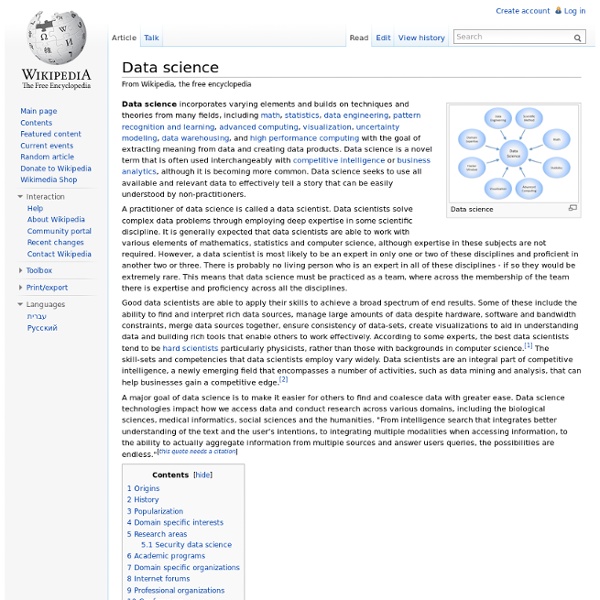Data Science

What is a Data Scientist? – Bringing big data to the enterprise
About data scientists Rising alongside the relatively new technology of big data is the new job title data scientist. While not tied exclusively to big data projects, the data scientist role does complement them because of the increased breadth and depth of data being examined, as compared to traditional roles. Understanding Big Data: Analytics for Enterprise Class Hadoop and Streaming Data Download the ebook So what does a data scientist do? A data scientist represents an evolution from the business or data analyst role. The data scientist role has been described as “part analyst, part artist.” Whereas a traditional data analyst may look only at data from a single source – a CRM system, for example – a data scientist will most likely explore and examine data from multiple disparate sources. Data scientists are inquisitive: exploring, asking questions, doing “what if” analysis, questioning existing assumptions and processes. Want to learn more about big data?
Data Science Disciplines
IOM London
Sense data
In the philosophy of perception, the theory of sense data was a popular view held in the early 20th century by philosophers such as Bertrand Russell, C. D. Broad, H. H. Price, A.J. Ayer, and G.E. Talk of sense-data has since been largely replaced by talk of the closely related qualia. Examples[edit] Bertrand Russell heard the sound of his knuckles rapping his writing table, felt the table's hardness and saw its apparent colour (which he knew 'really' to be the brown of wood) change significantly under shifting lighting conditions. H. When we twist a coin it 'appears' to us as elliptical. Consider a reflection which appears to us in a mirror. The nature of sense data[edit] The idea that our perceptions are based on sense data is supported by a number of arguments. Abstract sense data[edit] Abstract sense data is sense data without human judgment, sense data without human conception and yet evident to the senses, found in aesthetic experience. Criticisms[edit] See also[edit] References[edit]
Related:
Related:



